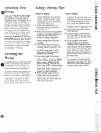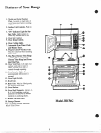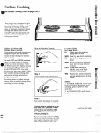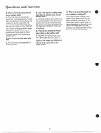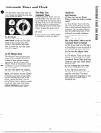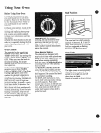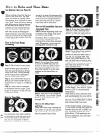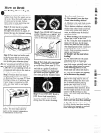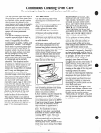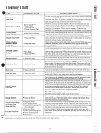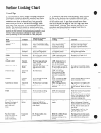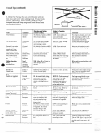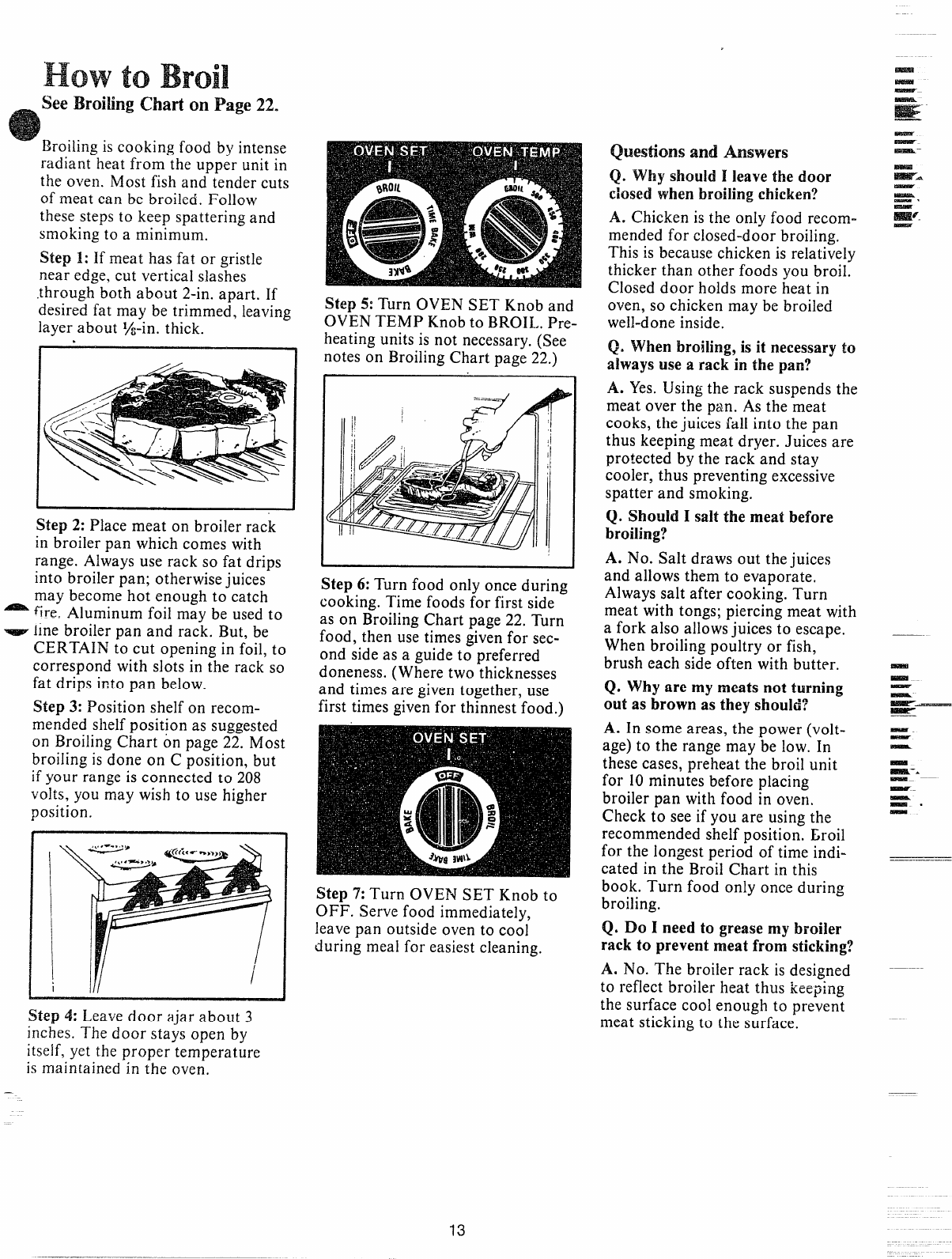
See kiting Chart on Page Z!.
—
Broiling iscooking food by intense
radiant heat from the upper unit in
the oven. Most fish and tender cuts
of meat can be broiled. Follow
these steps to keep spattering and
smoking to a minimum.
Step 1:If meat has fat or gristle
near edge, cut vertical slashes
through both about 2-in. apart. If
desired fat may be trimmed, leaving
layer about %-in. thick.
.
Step 2: Place meat on broiler rack
in broiler pan which comes with
range. Always use rack so fat drips
into broiler pan; otherwise juices
may become hot enough to catch
fire= Aluminum foil may be used to
line broiler pan and rack. But, be
CERTAINTto cut opening in foil, to
correspond with slots in the rack so
fat drips into pan below.
Step 3: Position shelf on recom-
mended shelf position as suggested
on Broiling Chart on page 22. Most
broiling isdone on C position, but
if your range is connected to 208
volts, you may wish to use higher
position.
f
1
Step 4: Leave door ajar about 3
inches. The door stays open by
itself, yet the proper temperature
is maintained in the oven.
—
Step !5:Turn OVEN SET Knob and
OVEN TEMP Knob to BROIL. Pre-
heating units is not necessary. (See
notes on Broiling Chart page 22.)
Step 6:Turn food only once during
cooking. Time foods for first side
as on Broiling Chart page 22. Turn
food, then use times given for sec-
ond side as a guide to preferred
doneness. (Where two thicknesses
and times are given together, use
first times givenfor thinnest food.)
Step 7:Turn OVEN SET Knob to
OFF, Serve food immediately,
leave pan outside oven to cool
during meal for easiest cleaning.
Questionsand Answers
Q. ‘WhyshouldI leave
the door
closed whenbroilingchicken?
A. Chicken is the only food recom-
mended for closed-door broiling.
This is because chicken is relatively
thicker than other foods you broil.
Closed door holds more heat in
oven, so chicken may be broiled
weILdone inside.
Q. Whenbro~ling,is it necessaryto
alwaysuse a rackin the pan?
A. Yes.Using the rack suspends the
meat over the pan. As the meat
cooks, the juices fall into the pan
thus keeping meat dryer. Juices are
protected by the rack and stay
cooler, thus preventing excessive
spatter and smoking.
Q. Should I saltthe meat before
broiling?
A. No. Salt draws out the juices
and allows them to evaporate,
Always salt after cooking. Turn
meat with tongs; piercing meat with
a fork also allowsjuices to escape.
When broiling poultry or fish,
brush each side often with butter.
Q. Whyare mymeats not turning
out as brownas they shouhi?
A.
In some areas, the power (volt-
age) to the range may be low. In
these cases, preheat the broil unit
for 10minutes before placing
broiler pan with food in oven,
Check to see if you are using the
recommended shelf position, Lroil
for the longest period of time indi-
cated in the Broil Chart in this
book. Turn food only once during
broiling.
Q. Do 1need to greasemy broiler
rackto preventmeatfrom sticking’?
A. No. The broiler rack is designed
to reflect broiler heat thus keeping
the surface cool enough to prevent
meat sticking to the surface.
EMfa
W#5m
—.
—
-
—-
—–
-
—
—
-.
—
——
-
--
—
—
Bmm!!’-
-
—
—
m
m-.
-— ——
—.
—
-.
-
————.
13
—



